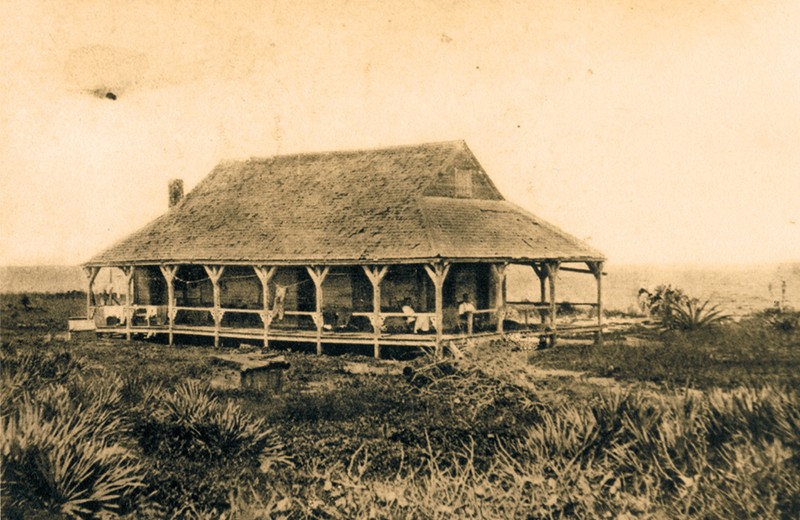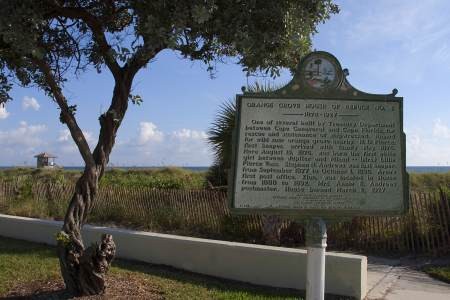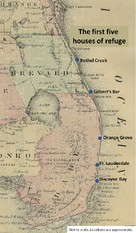Orange Grove House of Refuge No. 3, 1876-1927
Introduction
Text-to-speech Audio
One of five life-saving stations and temporary houses of refuge built by the federal government in 1876 along Florida’s east coast, the Orange Grove House of Refuge operated between 1876 and 1896. The government employed keepers at each of the five houses. These men scoured the beaches in search of possible shipwreck survivors and operate each of the houses of refuge. The keeper of this station and his family occupied the four rooms on the first floor and the second floor held a large dormitory and supplies for shipwrecked sailors or other survivors. The government built four additional houses of refuge in the 1880s. Only one of these nine stations remain-a historic building that serves as a museum in Stuart, Florida. Click the links below for more information about this House of Refuge and the museum.
Images
Now home to the Grosvenor House condominium, this was the location of the Orange Grove House of Refuge

This historic marker is located just south of the location of the former station, at the intersection of Atlantic and Ocean Blvd.

This map from Gray's Atlas Map of Florida shows the locations of the first five Houses of Refuges built by the federal government in 1876. Four additional houses were built ten years later.

Backstory and Context
Text-to-speech Audio
Hannibal Dillingham Pierce, an assistant lighthouse keeper at the Jupiter Lighthouse, served as the first keeper and lived here with his wife Margretta Moore and son Charles William. When Margaretta gave birth to Lillie Elder Pierce in 1876, Lillie likely became the first child of European origin to be born in this section of Florida. Shortly after the new station's completion,
Steven Andrews was hired as a permanent keeper and lived here with his wife Anne for nearly twenty years. The position likely caused tremendous loneliness, although the government allowed travelers and a handful of short-term boarders to rent space in the stations-both as a way to defray expenses and to provide extra help for the keepers. Andrews resigned the position in 1896 and the government closed the facility shortly after that time and rented it to some of the early settlers of Linton (later known as Delray Beach).
The former station remained a place of interest for residents and beach-goers until it was destroyed by fire in 1927. The area was excavated by high school students in the 1940s, and in 1968, the history of the Orange Grove House of Refuge was commemorated by a historic marker.
Steven Andrews was hired as a permanent keeper and lived here with his wife Anne for nearly twenty years. The position likely caused tremendous loneliness, although the government allowed travelers and a handful of short-term boarders to rent space in the stations-both as a way to defray expenses and to provide extra help for the keepers. Andrews resigned the position in 1896 and the government closed the facility shortly after that time and rented it to some of the early settlers of Linton (later known as Delray Beach).
The former station remained a place of interest for residents and beach-goers until it was destroyed by fire in 1927. The area was excavated by high school students in the 1940s, and in 1968, the history of the Orange Grove House of Refuge was commemorated by a historic marker.
Sources
Article by Delray Beach Historical Society http://pineapplenewspaper.com/a-look-back-at-delray-beach-history-what-do-oranges-have-to-do-with-shipwrecks/20582
